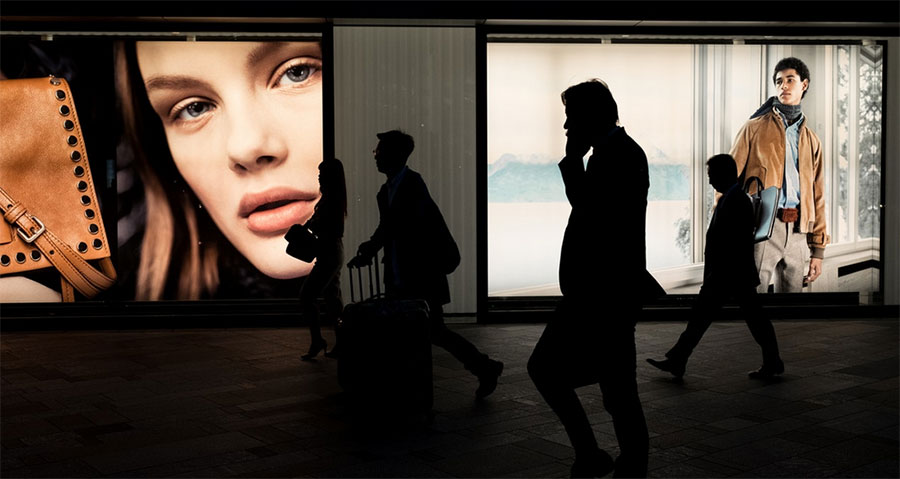The Future is Now: Ready or not, the robots are coming to a retail space near you.

For decades, we’ve been bombarded with futuristic television shows like “The Jetsons” and sci-fi movies like “The Terminator” or “I, Robot”, that depict robots infiltrating our daily lives. While hopefully we’ll never have to fight evil robots trying to take over the world, the retail world is readying for a technologic takeover.
If you follow the money trail, you’ll see that modern technology is already taking centerstage in retail, with a recent State of Retail Tech report revealing that funding of in-store technology rose by nearly 60-percent in 2019. Last year, during a conference that I attended in Amsterdam, chatter centered around artificial intelligence (AI), with retail poised to be the number one investor. It’s evident that retailers understand the importance of investing in game-changing technology that can help them improve their brick-and-mortar stores, and ultimately, profitability.
So, what does that look like? The answer isn’t simple, and most retailers will most likely end up investing in a blend of different technologies. Many retailers are currently in the stages of testing a variety of technologies to narrow down the right combination that works for their business. Some of the technologies they’re looking at include:
- Facial recognition and smart fixtures that can track a customer’s age, gender and their buying habits, offering valuable information for better service and customized products
- RFID (radio frequency identification), which is tracking technology that traces product inventory from the warehouse to the sales floor, or follows shopping carts around the racetrack of the store
- Video surveillance that analyzes how customers move throughout the store, zeroing in on where they stop and what they look at
- Robots that offer assistance in many different ways
Some of that technology is already here, with a few retail stores offering everything from interactive clothing try-ons to cashier-less checkouts. Last year, Amazon set the pace for cashier-less grocery stores by launching Amazon Go in several cities like Seattle and New York, where customers check-in on their app, and an array of cameras and software track what they buy and then charges them when they leave. For years, stores like Macy’s have been using beacons, which are small Bluetooth devices that can send alerts like discounts or promotions to customer’s smartphones based on location proximity. But shopping technology goes even deeper (and may feel like a scene from the movie “Minority Report”), with the invention of smart mirrors that use AI to allow customers to try on clothing without ever entering a dressing room.
Even having your clothing tailored has become as simple as snapping a picture on your phone; the MTailor app uses your phone’s camera to scan your body for nearly perfect measurements for custom-made clothing delivered to your door. Luxury brand Chanel recently opened Chanel Fragrance and Beauté Boutique in Miami, a first in the U.S. digital interactive fragrance experience where clients can refill the five best-selling fragrances exclusively at the boutique, along with an immersive discovery makeup and skincare area, where beauty lovers can play with the latest products.
Robots may not be roaming stores near you yet — but they’re coming — big-box retailers Walmart, Target and Loews are currently testing robots in their warehouses. In Salem, New Hampshire, Walmart rolled out the Alphabot, which helps with streamlining the online grocery pickup and delivery process for associates and customers. Autonomous carts retrieve refrigerated and frozen items ordered for online grocery, then the Alphabot delivers the products to a workstation, where a Walmart associate checks, bags and delivers the final order.
While you may see apocalyptic headlines shouting that robots will one day replace us all, I don’t think that’s the case. In retail, robots aren’t necessarily there to replace people, but to help streamline processes and give human employees better enjoyment and fulfillment in the workplace. The way I see it, robots can be used to take over mundane, laborious jobs, to free up resources for a better customer experience and improved productivity.
For example, instead of associates walking the aisles, physically taking notes on what’s on shelves, and what’s not, robots can scan the shelves and then spit out vital information like price accuracy or product location. (Once again, Walmart already has robots that scan aisles and send alerts to employees in real time.) Or, robots can roam the frozen sections of a grocery store, checking to make sure temperatures are accurate, so food doesn’t spoil. Taking care of those time-sucking jobs, allows associates to help ring up customers when lines become long, or assist them in finding a certain product. Maybe one day, robots will also fill those shelves, or eventually replace some human jobs, like store greeters that can speak numerous languages and make customers feel at home.
At my company, T-ROC, we’re already embracing these trends, with a core focus on learning and technology. Over the last few years, we’ve been meeting with CEO’s, manufacturers and retailers to figure out how we can stay ahead in this quickly moving arena. We’re looking to be an AI platform, where we ingest all of the information — collected from different types of robotics, RFID and video cameras — and then help analyze all of that actionable data so that retailers can be more efficient and productive. That could mean anything from predicting what time of day a store sees the most activity to pinpointing which products are most popular with customers. The future is here, and to survive, retailers should be ready to adapt and embrace this evolving technology.
Add CEOWORLD magazine to your Google News feed.
Follow CEOWORLD magazine headlines on: Google News, LinkedIn, Twitter, and Facebook.
This report/news/ranking/statistics has been prepared only for general guidance on matters of interest and does not constitute professional advice. You should not act upon the information contained in this publication without obtaining specific professional advice. No representation or warranty (express or implied) is given as to the accuracy or completeness of the information contained in this publication, and, to the extent permitted by law, CEOWORLD magazine does not accept or assume any liability, responsibility or duty of care for any consequences of you or anyone else acting, or refraining to act, in reliance on the information contained in this publication or for any decision based on it.
Copyright 2024 The CEOWORLD magazine. All rights reserved. This material (and any extract from it) must not be copied, redistributed or placed on any website, without CEOWORLD magazine' prior written consent. For media queries, please contact: info@ceoworld.biz
SUBSCRIBE NEWSLETTER








